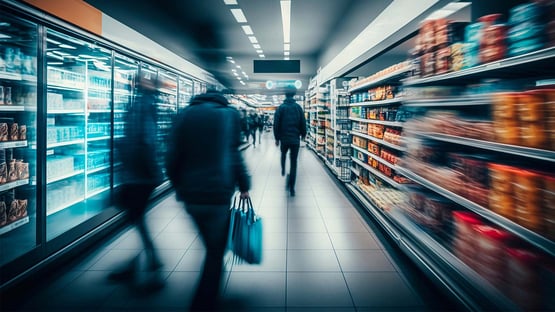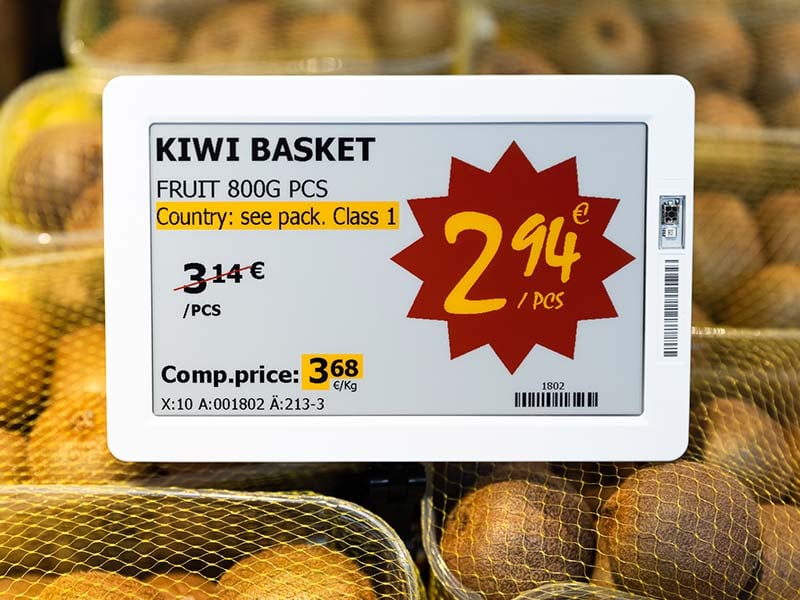New Business Models for Retail

Retailers are recognising that their existing assets represent new revenue opportunities across the supply chain, across their digital platforms and into the store. Retail Connections’ Managing Editor and independent retail analyst, Chris Field, looks into the true potential of retail media, a market that was already worth over £100bn in 2022 and nearly 11% of all ad spend and shows no sign of slowing.
In the fiercely competitive retail market (when wasn’t it?), now both retail and its customers are groaning under the weight of rising costs as a result of inflation, prompting retailers to look for new sources of revenue and routes to new consumers.
While for the likes of Amazon, Facebook and Google advertising has been ‘business as usual’ for many years, for retail, media has been a more recent discovery. Now it is delivering huge returns for the likes of Walmart and Albertsons in the U.S. and now in the UK for Boots, Sainsbury’s, Tesco and others. Retailers faced not just with higher operational costs but a staff squeeze are prepared to diversify using their existing strengths.
Retail media also enables retailers to challenge their own rising digital advertising costs, address a falling Return of Ad Spend from 3rd party traditional digital, social and search channels, and take control of their own closed loop solutions that provide more granular detail – and better engagement - than traditional online advertising.
Retail media is not the only game in town, however. A growing number of retailers, such as Gap, are offering their logistics and fulfillment services to other retailers, leveraging their supply chains as revenue generators. And Ocado has found growth by offering its automated warehouse technology to third parties looking to build their own grocery ecommerce offer.
However, these other innovations are dwarfed by the income potential from retail media and predictions of huge growth of these networks being made by the analyst community.
Boston Consulting, for instance, estimates that the retail media market will grow by 25% per year to $100 billion over the next five years and will account for over 25% of total digital media spending by 2026. Meanwhile, sales from retail media advertising could surpass TV revenue by 2028, says GroupM.
And it’s not just about the money. In-store, retail media offers a massive opportunity to transform the customer experience, build brand awareness, and influence buying decisions right at the point of purchase, when the shopper is arguably the most conversion-ready; recent research ADvendio shows the store is now the most impulsive shopping channel for 54% of UK consumers.
And that’s even more important now that it is clear that online retail is unlikely to encroach much further on store sales, which is what looked like would happen during and immediately after the Covid pandemic, and the cost of doing digital-only business well has grown exponentially.
In-store retail media (or store as media) takes a fresh look at the potential of bricks-and-mortar’s shelves and aisles to promote brands, particularly with Retail Touchpoints reporting sales uplifts of up to 35%.
Retail media builds on the age-old practice of point-of-sale promotion, but this is now supercharged by digital shelf-edge and signage tech with computer vision. Think highly targeted digital ads served on TV walls, front-of store kiosks, between-aisle signage, digital shelving, checkout aisles, self-checkout terminals, smart carts, end caps, and cooler doors, all of which needs to make a simple connection with customers through smart phone apps and QR codes.
This long list of contributing technology immediately implies complexity and it is important for retailers to understand the importance of a governing strategy, particularly as, done well, retail media can bridge the gap between on- and offline. As consumers go back into stores, they expect a much greater integration with the experiences they have been having online.
And they will expect a lot more information about products, which is certain to change not just the way they are displayed and promoted but maybe even the way they are packaged. And right now, it looks as though they are not getting all the information and help they need; research by Pricer showed that 57% of consumers would like to have more access to product details in addition to pricing, whilst 49% would like more digital signage at the shelf-edge to help inform their buying decisions.

How much help they need does of course depend on the sort of products they are looking for; the Pricer report suggests that getting help is particularly important for complex, high consideration or big ticket items, where shoppers want to be able to self-serve information about the product and its specifications digitally at the point of display. Six on ten (61%) said access to digital product information became increasingly important when shopping for expensive items, while 45% have been put off buying a complex or considered purchase when there wasn’t enough product information available.
What is clear in the context of a more demanding customer is that, given the range of technologies involved, the need to engage and measure that engagement with consumers, and the complexity inherent in building and running campaigns, retailers either need help from a wealth of new agencies emerging or by building their own dedicated practices as most now have.
Tesco, for instance, built the UK’s largest closed loop grocery media and insight platform back in 2021 but partnered with Dunnhumby to manage it. Uniquely, the offer to brands is the data science in the Dunnhumby platform and the Tesco Clubcard loyalty programme, which reaches 20million households as well as 7million who use its app.
Tesco is the leader in a market in the UK now worth £1.7billion per year for UK retailers and £11bn across the EMEA region, based on the view that retail media could raise sales across the region by 1%. However, Morrisons, Sainsbury’s, Boots and Asos are also big players.
Professionalisation of planning and execution will be essential; while the supermarkets and CPGs currently dominate retail media, more and more brands are joining in and are able to learn quickly on the back of the expertise of the growing number of agencies and various software tools available.
Future success will also depend on diversification, such as endemic advertising, or promotion of services rather than products, think sports events, insurance, vet services and so on. 45% of the sales volume that Amazon Display drives is on non-Amazon sales. 23% of the sales volume that Sponsored Brands & Sponsored Products drive is on non-Amazon sales, according to research from a forthcoming report by Analytic Partners. Again, there is no reason at all why retailers cannot diversify in this way because they have not only the customer numbers but the deep first party data that can be used to personalise promotion.
The sharp growth curve for retail media is seductive for analysts and consultants writing about this glamorous new market, but for the retailers, the hard work now begins. Engaging with their customers more deeply is the best route for retailers to understand them better and set up a more democratic line of communications that is currently largely one-way. However, execution and management will demand a new breed of marketer, new processes and programmatic software that are currently in short supply in retail. In time, artificial intelligence (AI) may well be able to automate a lot of the work, but only if driven by a well thought-out strategy.
This article was originally published in Retail Connections on September 6, 2023